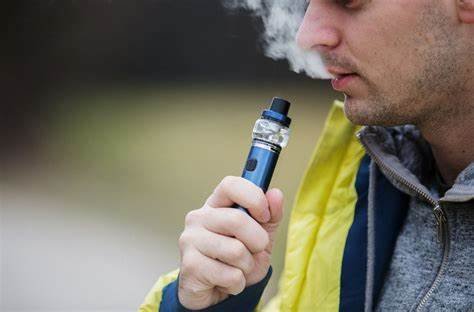Comprehensive Safety Tips for Using Carts, Disposables, and Vapes
comprehensive safety tipsfor using carts disposables and vapes 2The world of vaping has provided many with a convenient and enjoyable alternative to traditional smoking. As the popularity of vaping continues to rise, it is crucial to emphasize the importance of safety in using these products. Whether you prefer vape cartridges (carts), disposable vapes, or reusable vapes, understanding and practicing safety measures can help you enjoy a better vaping experience. This comprehensive guide will delve into essential safety tips for using carts, disposables, and vapes, ensuring you can vape responsibly and with confidence.
Table of Contents
- Introduction to Vaping Safety
- General Safety Tips for All Vaping Devices
- Quality and Authenticity
- Understanding Ingredients
- Proper Storage
- Safety Tips for Using Vape Cartridges (Carts)
- Handling and Usage
- Preventing Leaks and Spills
- Battery Safety
- Safety Tips for Using Disposable Vapes
- Handling and Usage
- Preventing Device Malfunctions
- Proper Disposal
- Safety Tips for Using Reusable Vapes
- Device Maintenance
- Battery Safety and Charging
- Coil and Tank Maintenance
- Common Vaping Issues and How to Address Them
- Dry Hits
- Leaking
- Battery Problems
- Recognizing and Preventing Vaping-Related Illnesses
- Environmental Considerations and Safe Disposal
- Staying Informed: Keeping Up with Vaping Regulations and Research
- Conclusion
1. Introduction to Vaping Safety
Vaping safety encompasses a broad range of practices aimed at protecting users from potential hazards associated with vaping devices and e-liquids. While vaping is often considered a safer alternative to smoking, it is not without its risks. From device malfunctions to the quality of the e-liquids used, understanding these risks and how to mitigate them is vital for a safe vaping experience.
2. General Safety Tips for All Vaping Devices
Quality and Authenticity
- Purchase from Reputable Sources: Always buy vaping products from reputable and authorized retailers. Counterfeit or low-quality products can pose significant health risks.
- Check for Certifications: Look for products that have been tested and certified by recognized safety organizations. This ensures the product meets safety standards.
Understanding Ingredients
- Know Your E-Liquid: Familiarize yourself with the ingredients in your e-liquid. Avoid products with unknown or questionable components.
- Nicotine Levels: Be aware of the nicotine content in your e-liquid, especially if you are new to vaping or sensitive to nicotine.
Proper Storage
- Store Safely: Keep your vaping devices and e-liquids out of reach of children and pets. Store them in a cool, dry place away from direct sunlight.
- Avoid Extreme Temperatures: Do not expose your vaping devices or e-liquids to extreme temperatures, as this can damage the product and pose safety risks.
3. Safety Tips for Using Vape Cartridges (Carts)
Handling and Usage
- Inspect Before Use: Always inspect your cartridge for any signs of damage or leaks before using it. Do not use a damaged cartridge.
- Follow Manufacturer Instructions: Adhere to the manufacturer’s instructions for attaching and using the cartridge with your vape pen or battery.
Preventing Leaks and Spills
- Proper Connection: Ensure the cartridge is securely connected to the battery to prevent leaks.
- Storage Position: Store cartridges upright to minimize the risk of leaks.
Battery Safety
- Compatible Batteries: Use only batteries recommended by the cartridge manufacturer. Using incompatible batteries can cause malfunctions or safety hazards.
- Avoid Overcharging: Do not overcharge the battery. Disconnect the battery from the charger once it is fully charged to prevent overheating.
4. Safety Tips for Using Disposable Vapes
Handling and Usage
- Read the Instructions: Always read and follow the manufacturer’s instructions before using a disposable vape.
- Proper Inhalation: Avoid taking excessively long or deep puffs, as this can overheat the device and potentially cause a burnt taste or other issues.
Preventing Device Malfunctions
- Avoid Water Exposure: Keep disposable vapes away from water and moisture to prevent damage and potential malfunctions.
- Check for Damage: Inspect the device for any signs of damage before use. Do not use a damaged disposable vape.
Proper Disposal
- Dispose Responsibly: Follow local regulations for disposing of electronic devices. Many areas have specific guidelines for disposing of vapes and batteries.
- Environmental Impact: Consider the environmental impact of disposable vapes and explore recycling options if available.
5. Safety Tips for Using Reusable Vapes
Device Maintenance
- Regular Cleaning: Clean your device regularly to ensure optimal performance and hygiene. Use a soft cloth and appropriate cleaning tools for the tank and mouthpiece.
- Avoid Overfilling: Do not overfill the tank, as this can cause leaks and affect the device’s performance.
Battery Safety and Charging
- Use the Right Charger: Always use the charger provided by the manufacturer or one that is specifically designed for your device.
- Monitor Charging: Do not leave your device unattended while charging. Disconnect it once fully charged.
Coil and Tank Maintenance
- Replace Coils Regularly: Replace the coil according to the manufacturer’s recommendations to maintain the quality of your vaping experience and avoid burnt tastes.
- Check for Wear and Tear: Regularly inspect the tank and other components for signs of wear and tear, replacing them as needed.
6. Common Vaping Issues and How to Address Them
Dry Hits
Symptoms: A burnt or harsh taste when inhaling.
Causes: Low e-liquid levels, old or burnt coil, or high wattage settings.
Solutions:
- Check E-Liquid Levels: Ensure the tank or cartridge has sufficient e-liquid.
- Prime the Coil: Allow e-liquid to soak into the coil before use.
- Replace the Coil: If the coil is old or burnt, replace it with a new one.
Leaking
Symptoms: E-liquid leaking from the tank or cartridge.
Causes: Overfilling, damaged tank, or improper assembly.
Solutions:
- Avoid Overfilling: Do not fill the tank beyond the recommended level.
- Check Seals and Connections: Ensure all seals and connections are secure and intact.
- Replace Damaged Parts: If the tank or seals are damaged, replace them.
Battery Problems
Symptoms: Device not charging or holding a charge.
Causes: Damaged battery, improper charging, or faulty charger.
Solutions:
- Inspect the Battery: Check for any visible damage to the battery.
- Use the Correct Charger: Ensure you are using the recommended charger for your device.
- Replace the Battery: If the battery is damaged or no longer holds a charge, replace it with a new one.
7. Recognizing and Preventing Vaping-Related Illnesses
Symptoms to Watch For
- Respiratory Issues: Persistent coughing, shortness of breath, or chest pain.
- Gastrointestinal Symptoms: Nausea, vomiting, or diarrhea.
- Other Symptoms: Fever, fatigue, or unexplained weight loss.
Preventive Measures
- Use Trusted Products: Only use e-liquids and vaping devices from reputable brands and sources.
- Avoid Harmful Additives: Be cautious of e-liquids containing unknown additives or thickening agents like Vitamin E acetate.
- Seek Medical Attention: If you experience any concerning symptoms, seek medical attention promptly. Safety Tips for Using Carts, Disposables, and Vapes
8. Environmental Considerations and Safe Disposal
Environmental Impact
- Waste Reduction: Consider using reusable vapes to reduce waste from disposable products.
- Recycling Programs: Explore recycling programs for vaping devices and components to minimize environmental impact.
Safe Disposal
- Follow Local Regulations: Adhere to local guidelines for disposing of electronic devices and batteries.
- Battery Disposal: Dispose of batteries at designated recycling centers to prevent environmental contamination.
9. Staying Informed: Keeping Up with Vaping Regulations and Research
Regulatory Changes
- Stay Updated: Keep abreast of changes in vaping regulations in your region to ensure compliance and safety.
- Product Recalls: Be aware of any product recalls or safety advisories related to vaping devices and e-liquids.
Ongoing Research
- Health Studies: Follow ongoing research into the health effects of vaping to make informed decisions about your vaping habits.
- Technological Advances: Stay informed about new technologies and safety features in the vaping industry. Safety Tips for Using Carts, Disposables, and Vapes
10. Conclusion
Safety should always be a priority when using vaping products, whether you prefer vape cartridges, disposable vapes, or reusable vapes. By following the safety tips outlined in this guide, you can enjoy a safer and more satisfying vaping experience. Remember to purchase products from reputable sources, understand the ingredients in your e-liquids, and properly maintain and dispose of your devices. Stay informed about regulatory changes and ongoing research to ensure you are making the best choices for your health and well-being.
By being a responsible vaper, you not only protect yourself but also contribute to a safer and more sustainable vaping community.


